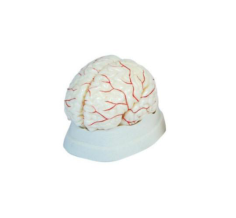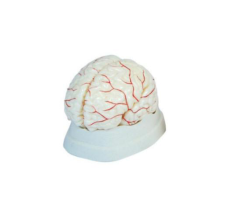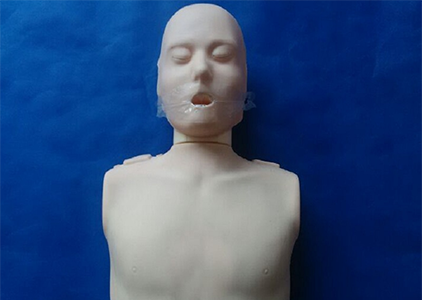
In modern medical education, personalization and precision medicine have become central topics, especially in the fields of neurology and brain surgery. With the continuous advancement of precision medicine, medical training not only requires students to master basic anatomical knowledge, but also requires them to have higher precision clinical operation ability. Whether the cerebral artery model, as an anatomical and surgical training tool, can meet the market demand for personalized and precision medicine training has become an important question for experts and educators in the industry.

1. Personalized training needs
With the continuous development of medical education, the traditional "one-size-fits-all" teaching method can not meet the increasingly complex medical needs. Personalized training requires that teaching content be tailored to the progress, interests and needs of each participant. With its high customizability, the cerebral artery model is becoming an ideal tool for personalized training.
Modern cerebral artery models can adjust their difficulty and detail to the specific needs of the student. For example, for neurosurgery students, different types of cerebrovascular lesions, such as aneurysms, arterial blockages, cerebral thrombus, etc. can be simulated through models. These customized training contents not only give students a deeper understanding of the fundamentals of anatomy, but also help them master how to handle specific cases in different clinical scenarios. Through this personalized learning style, students can conduct deep learning according to their own learning pace and interest direction to achieve the best learning results.
2. Demand for precision medicine training
Precision medicine emphasizes the development of personalized treatment plans based on individual genetic information, environmental factors and living habits, and the implementation of this concept requires doctors to have more accurate medical knowledge and skills. The cerebral artery model can help medical educators to teach in the framework of precision medicine by simulating different pathological scenarios.
For example, the modern cerebral artery model can not only show the normal cerebral vascular anatomy, but also simulate various cerebrovascular diseases, such as arteriosclerosis, cerebral aneurysm, thrombosis and so on. This high-precision model can help students better understand the impact of pathological changes on the cerebrovascular system and master treatment methods under different diseases. By simulating different treatment options, students can learn how to develop a personalized treatment plan based on the specific situation of the patient.
In addition, the cerebral artery model can provide support for training in high-risk surgery. For example, in cerebrovascular surgery, it is crucial to accurately identify the lesion site, judge the direction of blood vessels and choose the appropriate surgical path. With the help of the cerebral artery model, doctors can perform repeated exercises in a risk-free environment and improve their accuracy in practice.
3. Data support and feedback mechanism
In order to better adapt to the training needs of personalized and precision medicine, the design of cerebral artery models is also increasingly dependent on data support. Through integrated sensors, artificial intelligence, and machine learning technologies, the cerebral artery model can record the student's operational data in real time and provide personalized feedback based on the results of the data analysis. This feedback includes not only the accuracy and efficiency of the student's operation, but also suggestions for improvement in the details of the operation. For example, the model can evaluate a student's surgical actions during cerebral artery clot removal or aneurysm repair, and give feedback to help students avoid errors in clinical practice.
This data-driven approach to learning not only helps students improve their skills, but also provides teachers with a comprehensive performance assessment tool. Teachers can adjust the teaching content according to the students' learning progress and mastery, so that every student can get the most suitable training for themselves.
5. Global market trends
With the continuous development of global medical education and the high emphasis on precision medicine, the demand for cerebral artery models in the medical training market is growing. Especially in the field of neurosurgery, there is an urgent need for precise and personalized training. The data of the global medical training market shows that the cerebral artery model will become one of the mainstream tools in the future, especially in the aspect of high-precision and customized medical simulation equipment. This market is expected to continue to grow at a CAGR of about 8% over the next five years.
Sum up
With its high precision, customization, and integration with modern technologies such as VR/AR and artificial intelligence, cerebral artery models are becoming an important tool for personalized and precision medicine training. It not only meets the needs of personalized learning and precision medicine training in medical education, but also enhances the learning effect through data support and real-time feedback mechanism. With the continuous progress of medical technology, cerebral artery model will occupy an increasingly important position in the global market, and promote the development of medical education and clinical skills training to a more refined and personalized direction.







Sophie Asveld
February 14, 2019
Email is a crucial channel in any marketing mix, and never has this been truer than for today’s entrepreneur. Curious what to say.
Sophie Asveld
February 14, 2019
Email is a crucial channel in any marketing mix, and never has this been truer than for today’s entrepreneur. Curious what to say.